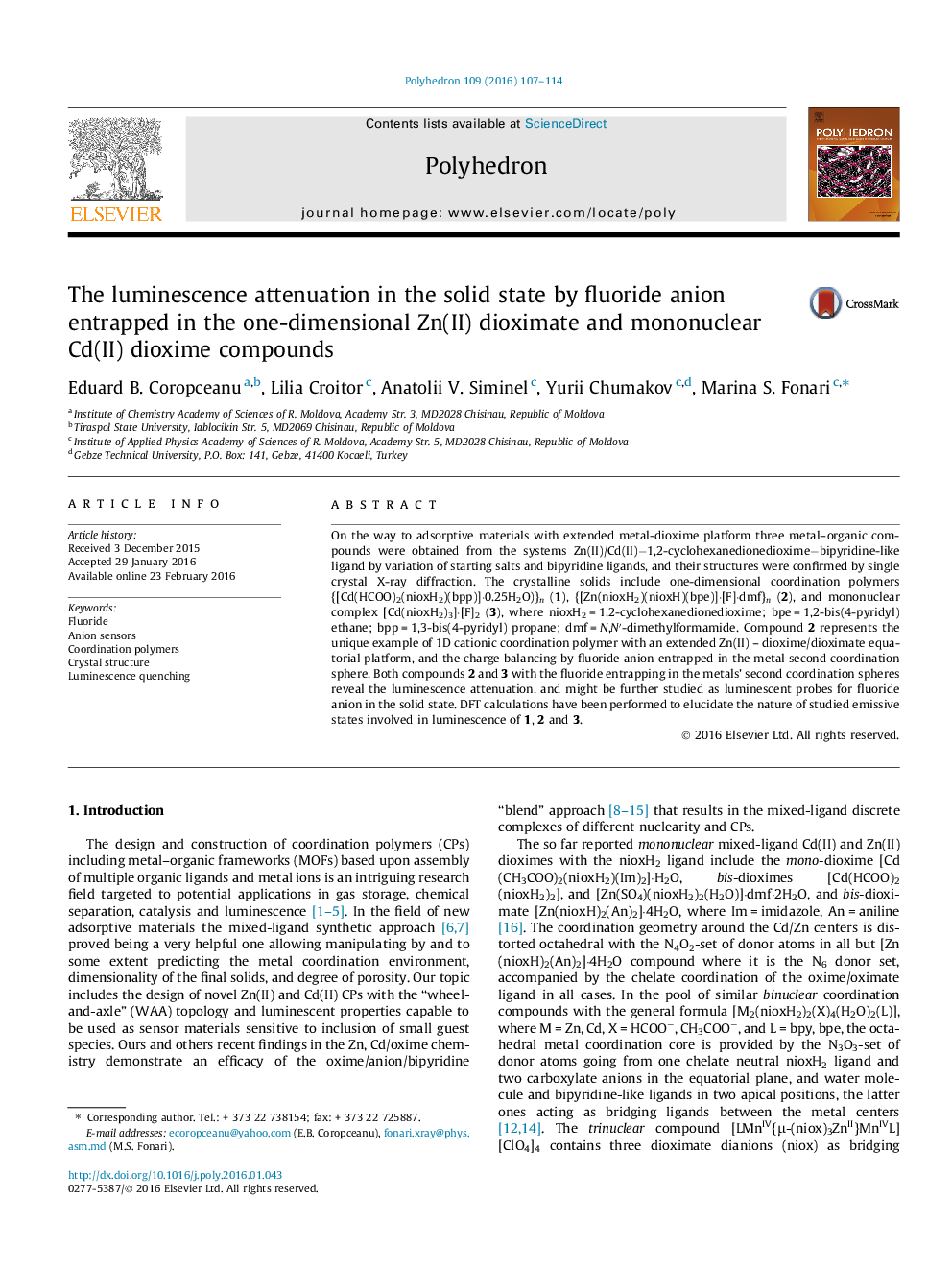| Article ID | Journal | Published Year | Pages | File Type |
|---|---|---|---|---|
| 1335134 | Polyhedron | 2016 | 8 Pages |
On the way to adsorptive materials with extended metal-dioxime platform three metal–organic compounds were obtained from the systems Zn(II)/Cd(II)−1,2-cyclohexanedionedioxime−bipyridine-like ligand by variation of starting salts and bipyridine ligands, and their structures were confirmed by single crystal X-ray diffraction. The crystalline solids include one-dimensional coordination polymers {[Cd(HCOO)2(nioxH2)(bpp)]·0.25H2O)}n (1), {[Zn(nioxH2)(nioxH)(bpe)]·[F]·dmf}n (2), and mononuclear complex [Cd(nioxH2)3]·[F]2 (3), where nioxH2 = 1,2-cyclohexanedionedioxime; bpe = 1,2-bis(4-pyridyl) ethane; bpp = 1,3-bis(4-pyridyl) propane; dmf = N,N′-dimethylformamide. Compound 2 represents the unique example of 1D cationic coordination polymer with an extended Zn(II) – dioxime/dioximate equatorial platform, and the charge balancing by fluoride anion entrapped in the metal second coordination sphere. Both compounds 2 and 3 with the fluoride entrapping in the metals’ second coordination spheres reveal the luminescence attenuation, and might be further studied as luminescent probes for fluoride anion in the solid state. DFT calculations have been performed to elucidate the nature of studied emissive states involved in luminescence of 1, 2 and 3.
Graphical abstractThe newly synthesized one-dimensional coordination polymer {[Zn(nioxH2)(nioxH)(bpe)]·F·dmf}n and mononuclear complex [Cd(nioxH2)3]·2F with the fluoride entrapping in the metals’ second coordination spheres reveal the luminescence attenuation, and might be further studied as luminescent probes for fluoride anion in the solid state.Figure optionsDownload full-size imageDownload as PowerPoint slide
